There’s something special about flowering trees. They’re sure to not only increase your curb appeal but also boost your spirits! Are you ready to show your yard some love? If you live in Ohio and have been looking for the best tree to plant in your yard, this article is for you!
Take a look at this list of flowering trees that are best suited for the Ohio climate.
1. Dogwood Tree
This beautiful tree grows in an umbrella shape with tiered, slightly arched branches. Its pristine white flowers appear in late March or April to May. You will also find red berries and red-purple leaves during the fall season! Planting these trees in the springtime while the surrounding soil is moist is crucial. These trees thrive in partial shade, so pick your planting site wisely.
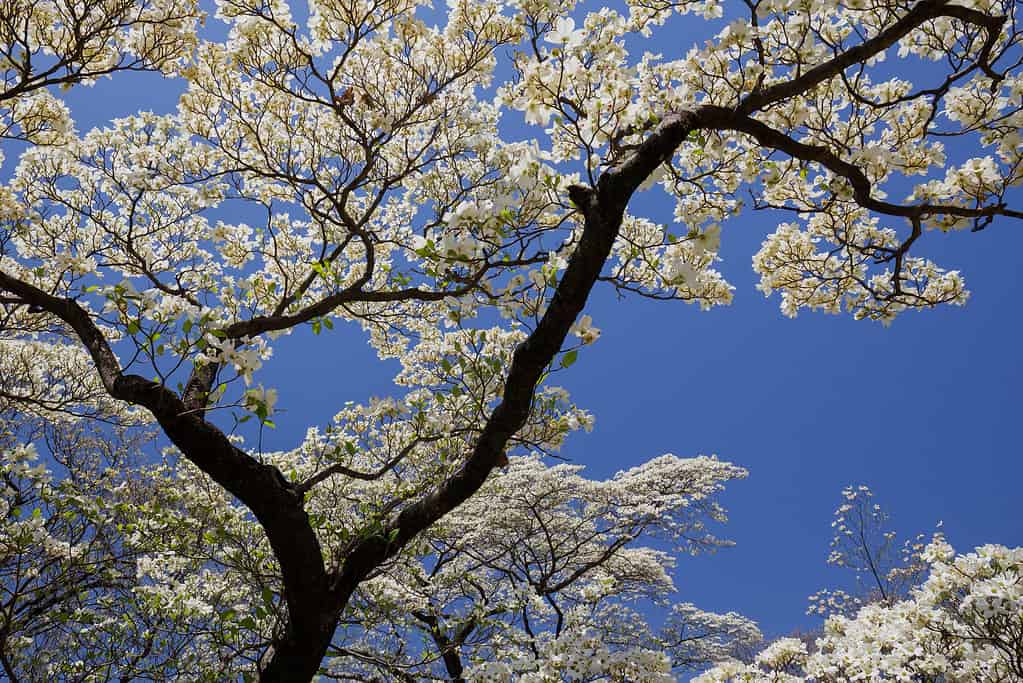
Dogwoods usually grow at a rate of about 1-2 feet per year.
©atonom/iStock via Getty Images
2. Weeping Cherry Tree
This cherry tree wants to soak up all the sun it can get! Also, wait until after the last frost in spring before you plant your tree. If you wait too long, the ground will be too hard to dig into. Ensure that the soil is draining well to avoid root rot. This tree is drought-tolerant and should make it through Ohio winters, but you should still wrap your tree in the winter while it’s young.
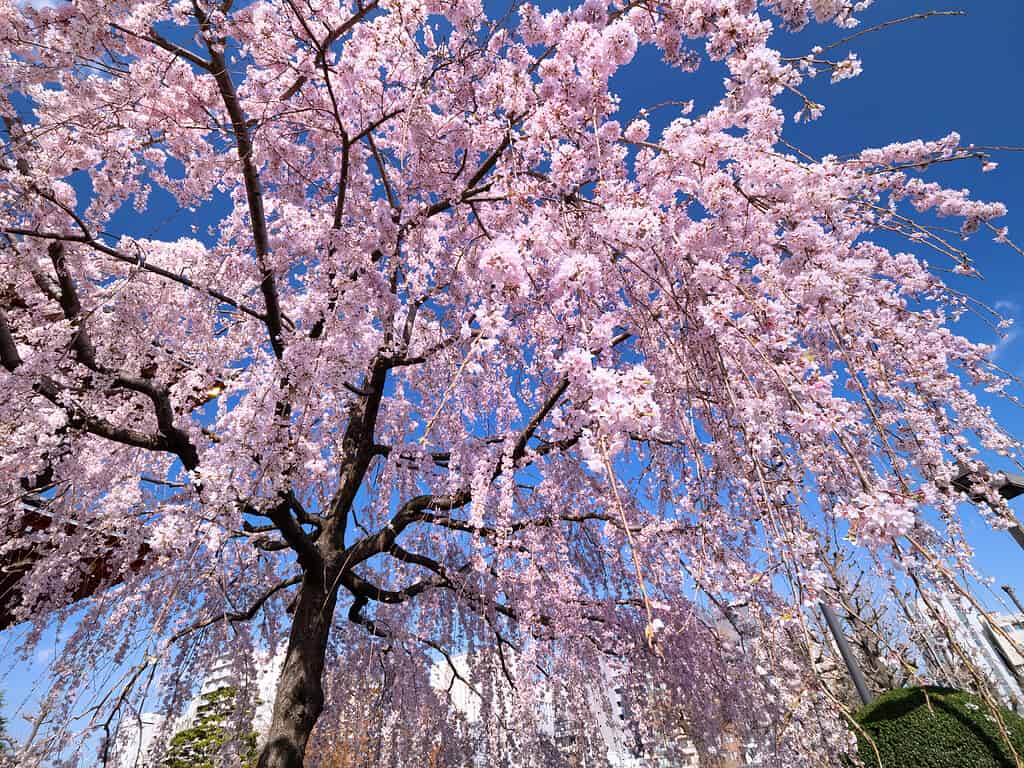
Some varieties can grow to be 20 to 30 feet tall and over 15 feet wide.
©y-studio/iStock via Getty Images
3. Redbud Tree
Redbud trees are commonly found across southern Ohio and enjoy full sun, though they can still grow in partial shade. Their beautiful flowers will begin to open in April before the foliage even appears. This vase-shaped tree can grow quite rapidly, given the right conditions. Be wary of trunk canker, a common disease affecting some redbud trees!
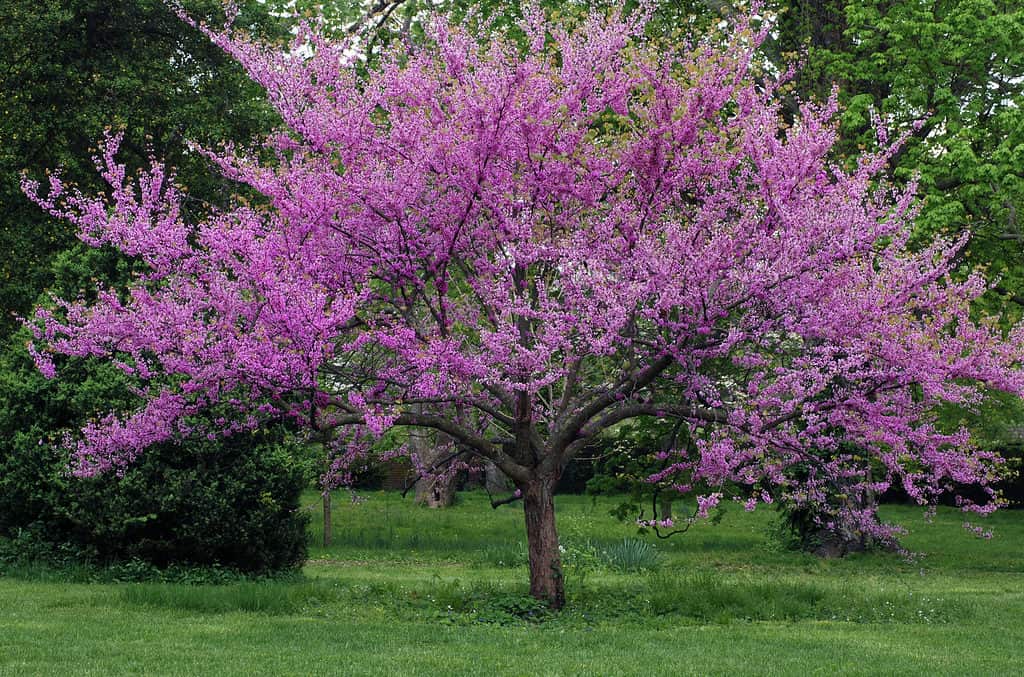
Eastern redbud trees (pictured) grow beautiful lavender-pink flowers and heart-shaped leaves.
©Marie C Fields/Shutterstock.com
4. Ohio Buckeye Tree
Did you know that you can plant buckeye trees in the fall? It’s also best to plant them before the full heat of the summer! This native tree is well-adapted to the climate in Ohio and can grow up to 50 feet tall. There’s a reason why you see these trees by streams and rivers: they prefer moist soil. Remember that the nuts these trees produce are incredibly toxic for both people and animals!
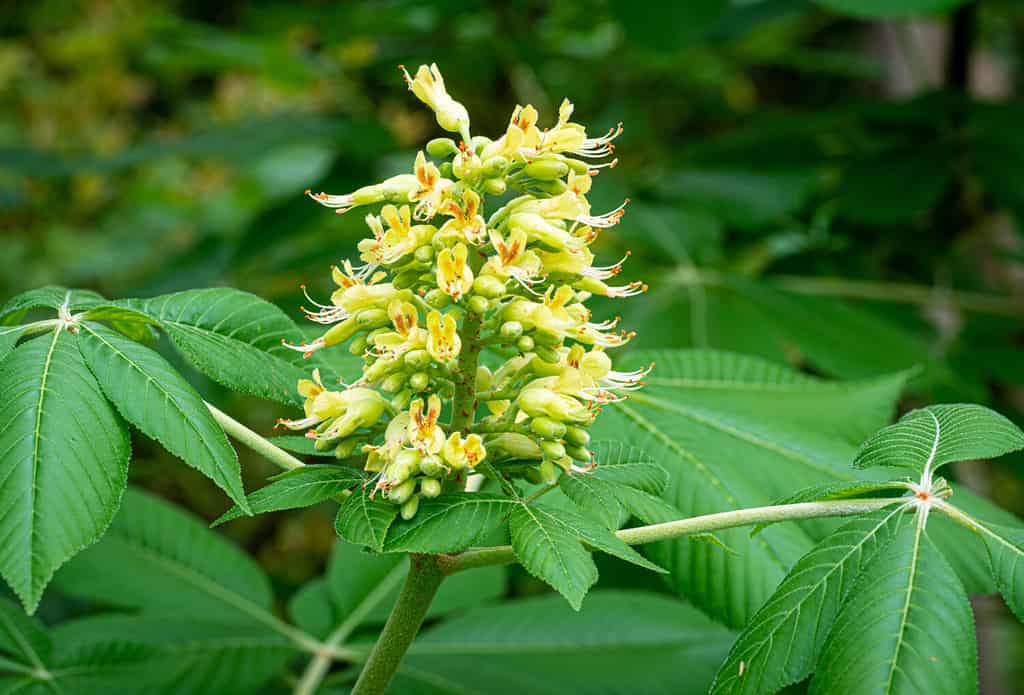
Watch out for leaf blotch, a common disease that gives a scorched appearance on the leaves.
©Gerry Bishop/Shutterstock.com
5. American Basswood Tree
The American basswood, also known as the American linden, is a favorite of bees because of the delicious nectar that comes from its beautiful flowers. These trees can reach all the way to 80 feet tall if planted correctly. While it prefers moist soil, it’s adaptable and can thrive even in dry soil. They can also grow in both full sun and partial shade. The small, creamy flower opens early in the summer and has a wonderful fragrance!

You will find basswood trees growing in Ohio’s northern and western portions.
©Alina Vaska/Shutterstock.com
6. Witch Hazel Tree
Witch hazel trees first appeared in 1736 and have been used to extract medicine from the bark of young stems and roots. Besides being useful for medicinal needs, the flowers are quite striking to behold. These small trees grow about 10-20 feet tall and 10-20 feet wide. Full sun or partial shade is beneficial. If you want a row of witch hazel trees, ensure they are separated by 10 to 12 feet since their full growth spread is near that width.

The strange-looking yellow flowers have a sharp scent reminiscent of lemon zest.
©Jennifer Gauld/iStock via Getty Images
7. Ivory Silk Lilac Tree
Give your ivory silk lilac tree the best start by planting them in spring or early fall. It would be best if you chose spaces where its roots and branches have room to grow freely. This single-trunked small tree produces beautiful white flowers. It’s very appealing to pollinators and requires very little upkeep. Plan on some efforts in pruning to ensure growth and encourage blooming. These trees need full sun and can grow in even the worst soil conditions!
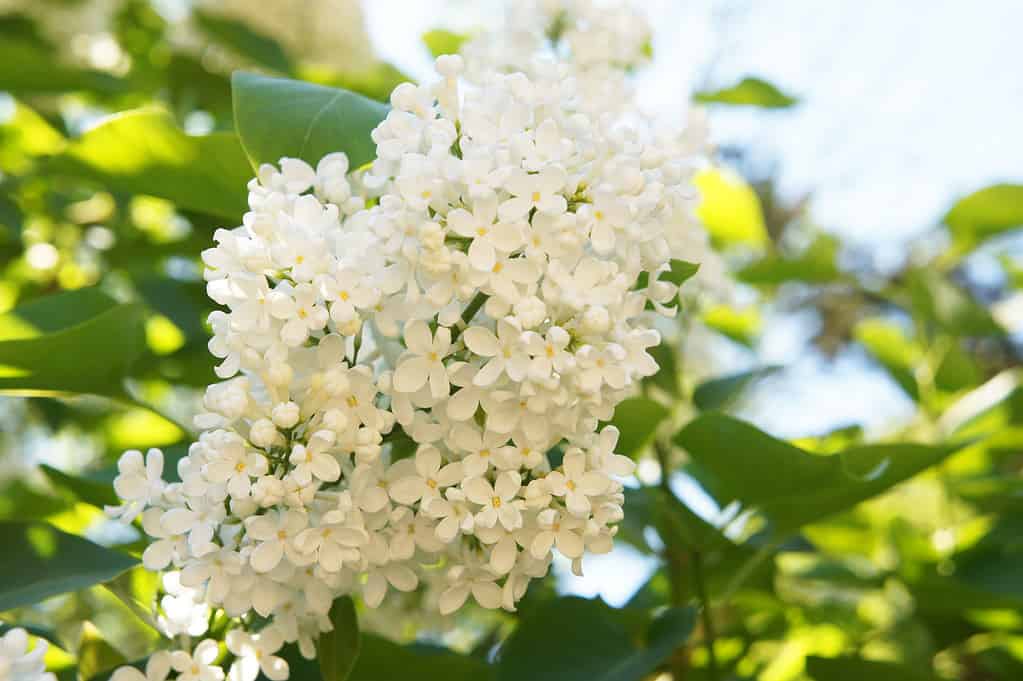
Ivory silk Japanese tree lilac flowers have very little fragrance.
©skymoon13/iStock via Getty Images
8. Allegheny Serviceberry Tree
The Allegheny serviceberry tree is a medium-sized tree that you can expect to grow to about 30 feet tall. This deciduous tree grows fast, which makes it a popular choice for many lawns. Plant your serviceberry during spring to early fall in moist, well-drained soils. You can plant them about 12 to 15 feet apart or group trees closer together to create a thicket! The droopy, white clusters of flowers pop up in spring and develop into beautiful little purple-black berries during the summer.

If you decide to prune your serviceberry to create a specific shape, ensure you prune in early winter to reduce sap loss.
©Wirestock/iStock via Getty Images
9. American Tulip Tree
Did you know that the tulip tree is actually a member of the magnolia family? You will find these tulip-shaped blooms from April to mid-June. The yellowish-green and orange-cupped flowers give off a delightful aroma. This means you can expect many birds and bees to visit your trees! Make sure you plant your tulip tree in full sun and in an area where it can spread out. These trees can reach massive heights!
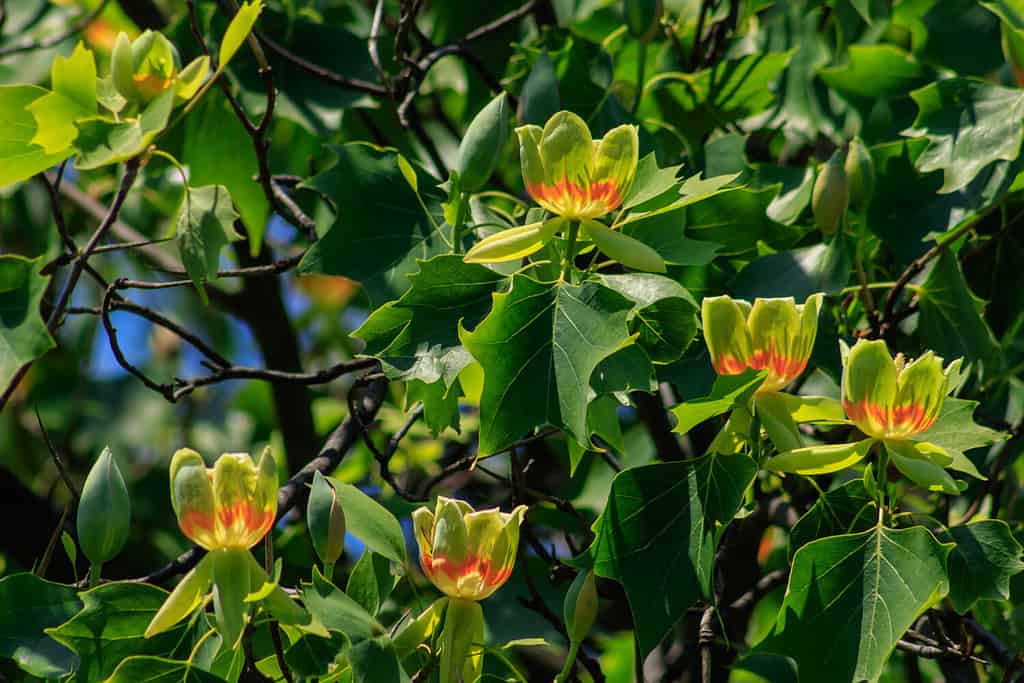
Once planted, this tree will grow rapidly at first, then slow down as it ages.
©Yanosh Nemesh/Shutterstock.com
10. Cleveland Select Pear Tree
The Cleveland Select, or Callery pear tree, is so appealing because it’s one of the last trees to lose its leaves in the fall. It’s very versatile, meaning it can grow in almost any condition. Once it reaches maturity, you can expect your tree to grow to about 40 feet in height. The pure white flowers produce a pleasant smell, unlike its family member, the Bradford pear tree, known for its foul odor. You won’t need to spend time pruning as this tree grows into a striking pyramidal shape on its own!
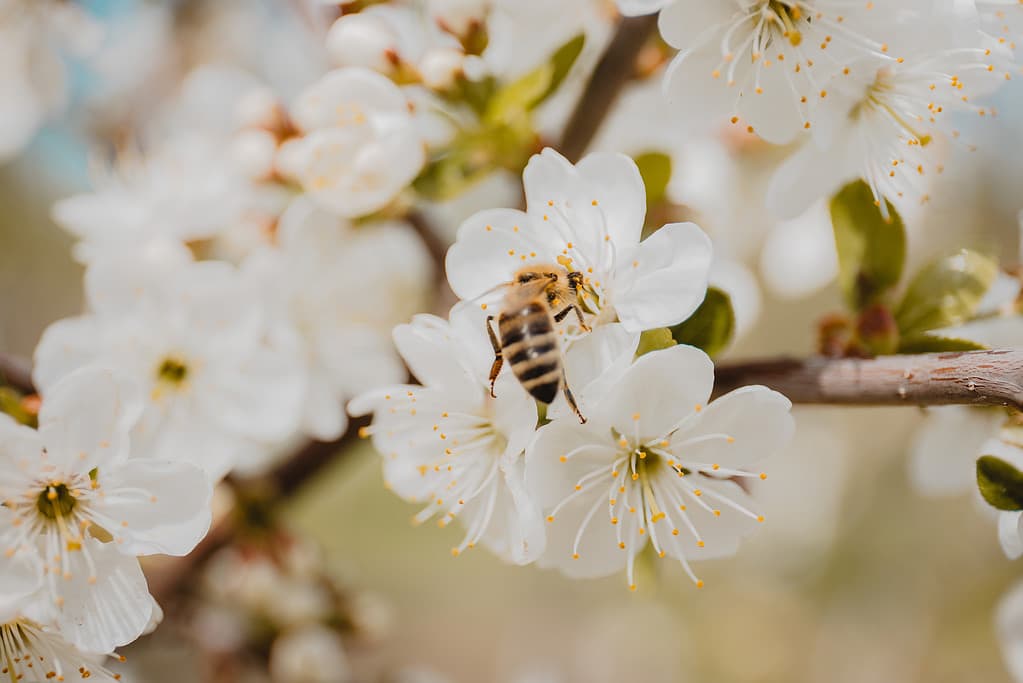
The Cleveland Select is a hardy tree that is very resistant to pests, ice, and wind.
©Wirestock/iStock via Getty Images
11. Cucumber Magnolia Tree
Though the cucumber magnolia tree doesn’t produce flowers as showy as other magnolia trees, the small, tulip-like springtime flowers are still quite beautiful. They tend to blend into the foliage because of their greenish, light yellow color. These are some of the most common magnolia trees found in Ohio. They easily reach 70 feet in height and 30 feet in width! Though it isn’t very drought-resistant, it will do well in residential settings instead of urban areas with city pollution.
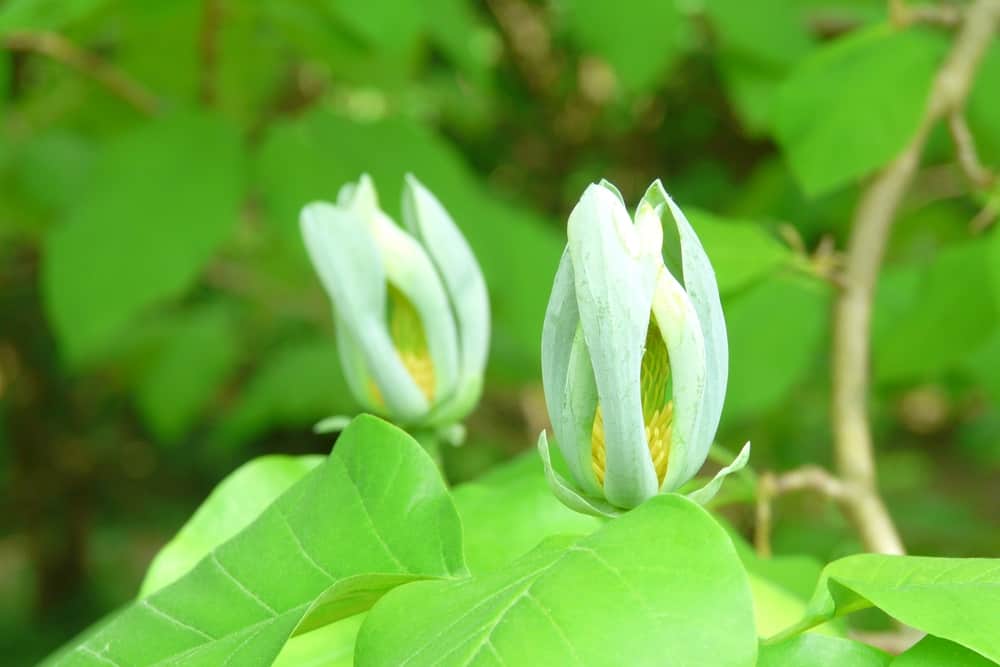
The flowers of Magnolia acuminata tend to blend into the foliage because of their greenish-light-yellow color.
©Anna Krzywania/Shutterstock.com
12. Limelight Hydrangea Tree
Did you know that limelight trees hold onto flower heads well into spring as new growth emerges? Like other hydrangeas, it’s crucial to plant this tree in the fall or early spring so it has time to take root before the summer heat. They can bloom beginning in May all through fall and have interesting features well into early winter that are appealing as well. These are hardy trees, and their cuttings will be long-lasting!

The limelight hydrangea produces enormous, pale green blooms that turn cream or pink as summer fades into fall.
©Baber Photography/iStock via Getty Images
13. Purple Prince Crabapple Tree
For best results, plant purple prince crabapple trees in the late spring but no later than early fall. It will require occasional maintenance and is best pruned in late winter once the threat of extreme cold temperatures has passed. Wintertime is the best showing of this tree, as the purple leaves and maroon berries are beautiful against a more bleak landscape. During spring, you can expect gorgeous rose-red flowers. These crabapple trees grow up to 20 feet tall and can live up to 50 years!
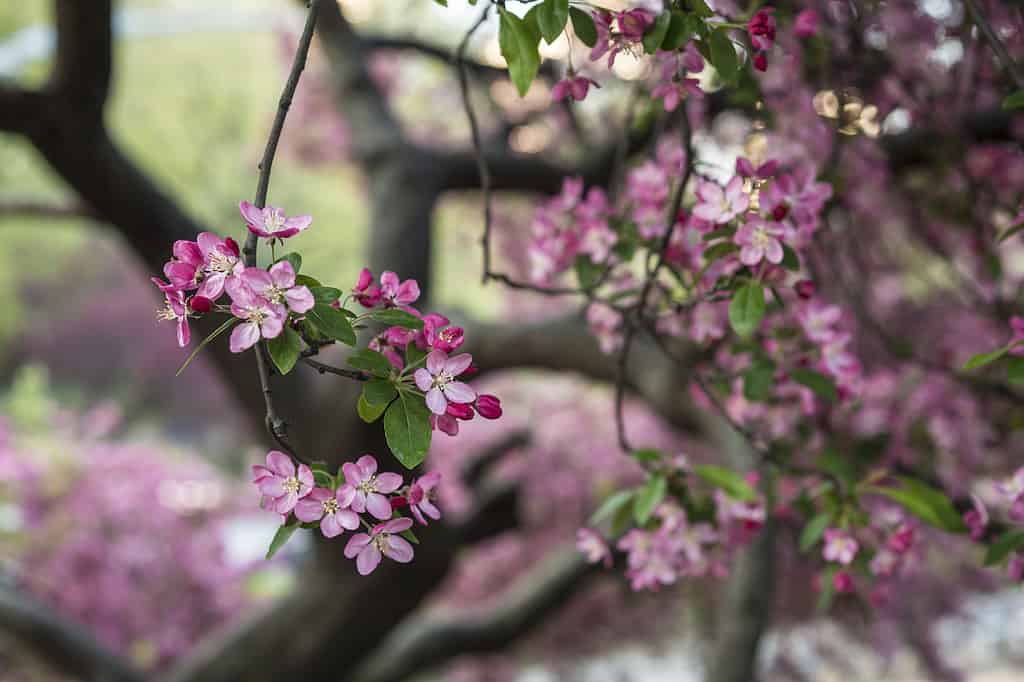
The Purple Prince Crabapple Tree is a popular choice for urban areas as it can thrive in inner city environments.
©johnandersonphoto/iStock via Getty Images
14. Northern Catalpa Tree
The beautiful northern catalpa tree is generally used as an ornamental shade tree in Ohio yards. The wood is very resistant to rot and grows rapidly. It’s a highly adaptable tree and can even do well in dry soil or soil that is primarily clay. Several diseases are known to strike these trees, but they’re pretty minor and don’t pose a severe threat. You will immediately notice the main flowering structure consists of a vast truss of individual white flowers with small amounts of yellow, orange, and purple.
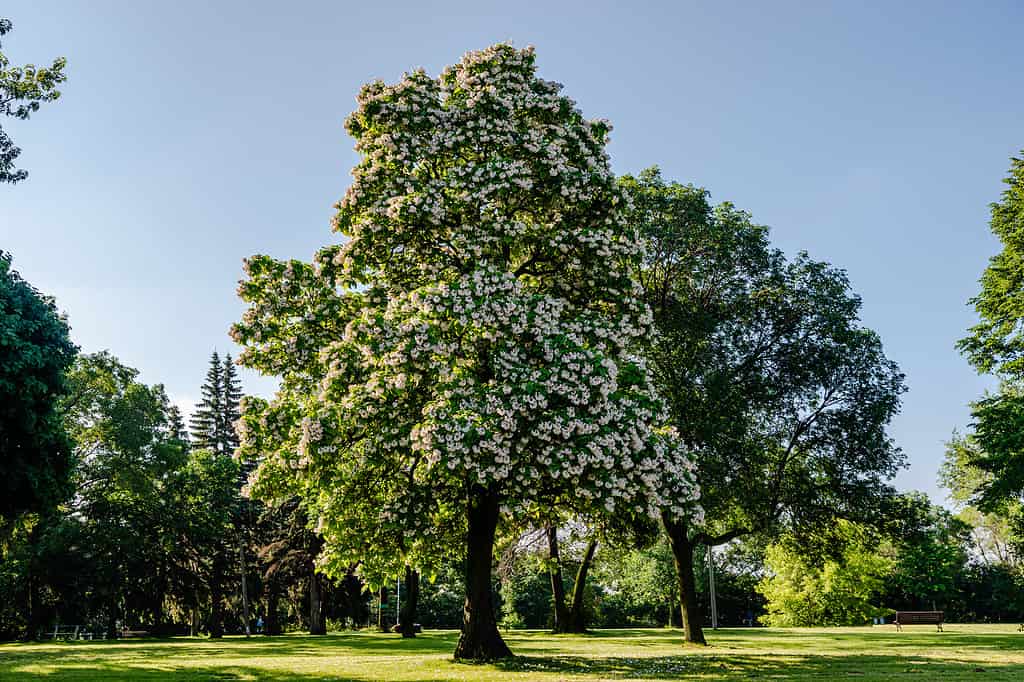
Northern Catalpa trees have been extensively cultivated in Ohio for over 200 years!
©Pito Fotos/iStock via Getty Images
15. Ohio Pioneer Hawthorn Tree
This tree is for you if you want a highly adaptable hawthorn variety. This tree is totally covered in a blanket of clusters of white flowers in mid-spring. You will find that the fruits are showy red pomes from early to late fall. These berries will drop to the floor, creating a mess if you’re not careful with upkeep. When you plant this tree, remember that it needs full sunlight to thrive! While it grows slowly, you can expect it to live over 50 years if cared for properly.
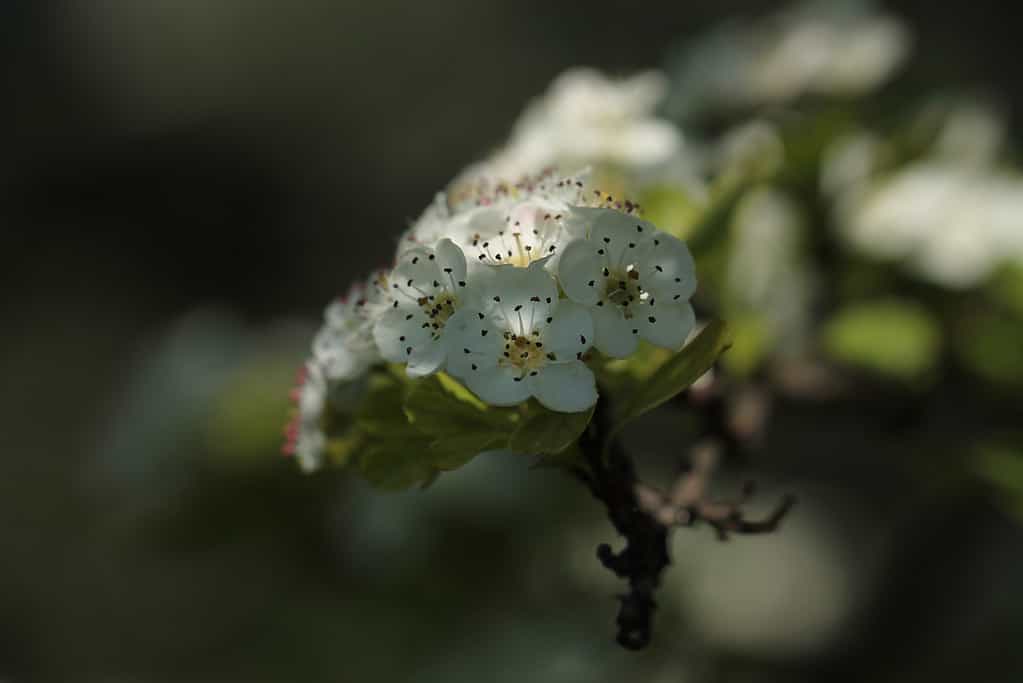
The specific variety of hawthorn was discovered in 1962 at the Secrest Arboretum Nursery in Wooster, Ohio.
©Simona Tonoli/iStock via Getty Images
Summary of 15 Flowering Trees for Ohio Yards
| Rank | Tree Name |
|---|---|
| 1 | Dogwood Tree |
| 2 | Weeping Cherry Tree |
| 3 | Redbud Tree |
| 4 | Ohio Buckeye Tree |
| 5 | American Basswood Tree |
| 6 | Witch Hazel Tree |
| 7 | Ivory Silk Lilac Tree |
| 8 | Allegheny Serviceberry Tree |
| 9 | American Tulip Tree |
| 10 | Cleveland Select Pear Tree |
| 11 | Cucumber Magnolia Tree |
| 12 | Limelight Hydrangea Tree |
| 13 | Purple Prince Crabapple Tree |
| 14 | Northern Catalpa Tree |
| 15 | Ohio Pioneer Hawthorn Tree |
The photo featured at the top of this post is © NAILOTL/iStock via Getty Images
Thank you for reading! Have some feedback for us? Contact the AZ Animals editorial team.







